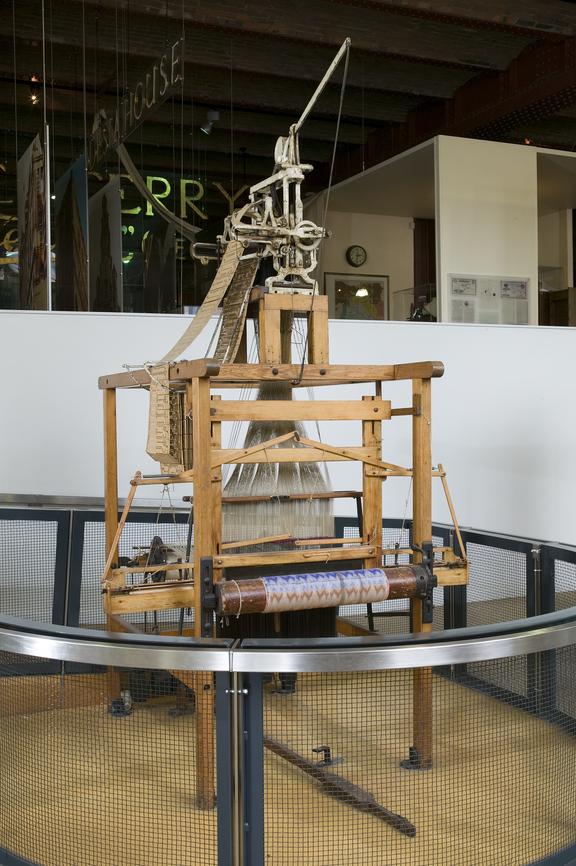

Jacquard Hand Loom
- Made:
- circa 1910 in Bolton and Lancashire

Jacquard hand loom, made by W. Archer, Bolton, around 1910.
This is a hand operated Jacquard loom. Students in Manchester used it to learn to weave. The punched cards at the top gave the loom instructions to weave a pattern. It meant weavers could create complicated designs easily, making beautiful, patterned fabrics more affordable.
The loom's punched cards are connected and form a continuous loop. The jacquard mechanism sits atop the loom and moves the cards along with each passing of weft thread through the warp threads. The cards are forced onto a set of pins. The pins go through the card where there are holes, and are stopped where there are not. This controls the lifting of the warp threads and weaves a pattern. The weaver controls the Jacquard mechanism with a foot operated lever.
The Jacquard machine was first developed by Joseph Jacquard in France in 1804-1805. The machine allows for great detail to be woven into the fabric with little human supervision.
The use of punched cards to store information was a precursor to modern computing. The first computers used a series of punched cards similar to those on a Jacquard loom to solve complex mathematical equations.
Details
- Category:
- Textile Industry
- Object Number:
- Y1973.43
- Materials:
- wood (unidentified) and metal (unknown)
- Measurements:
-
overall: 3048 mm x 1524 mm x 1830 mm,
- type:
- jacquard hand loom
- credit:
- Purchased From Textile Technology Department at UMIST




